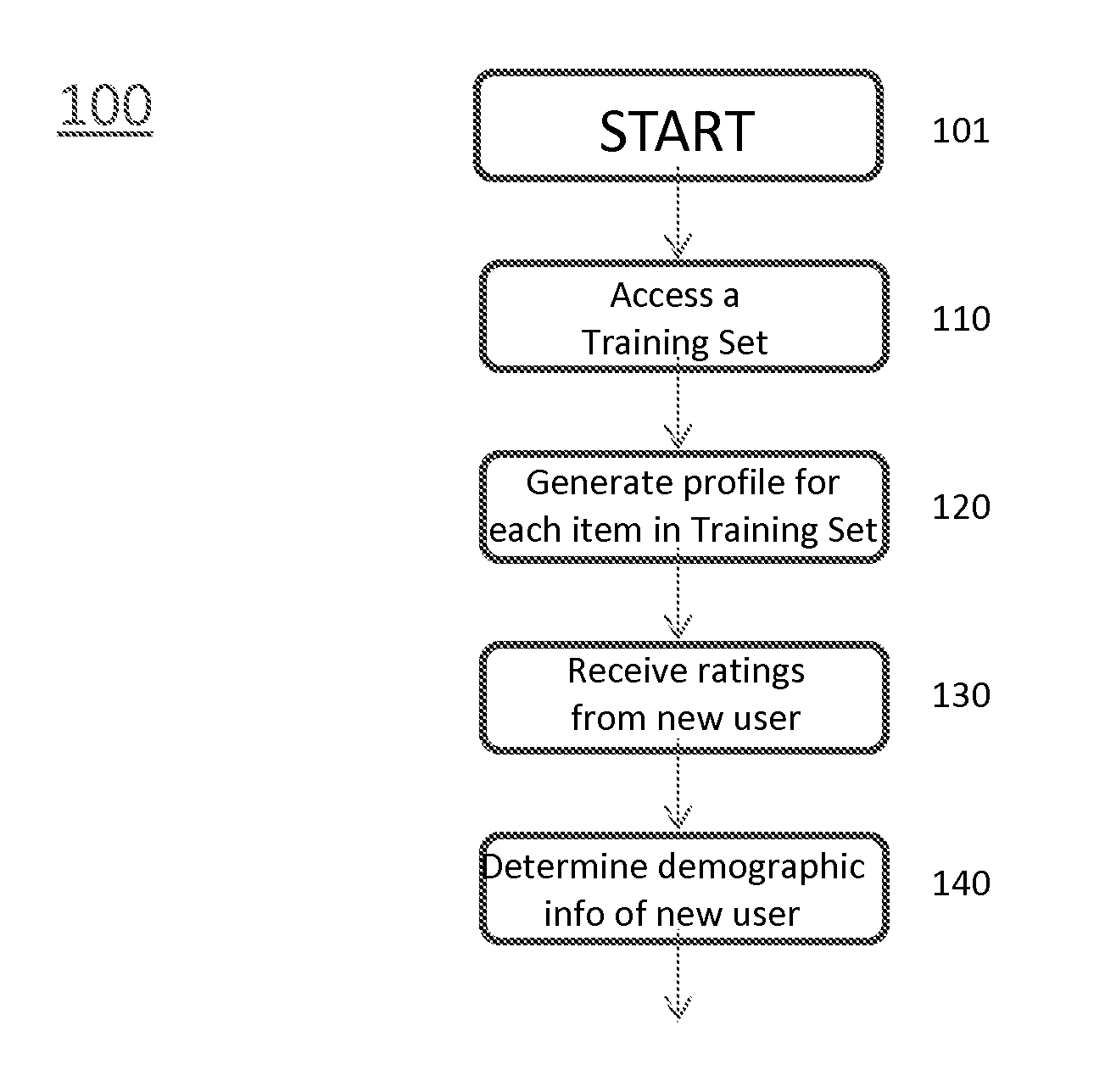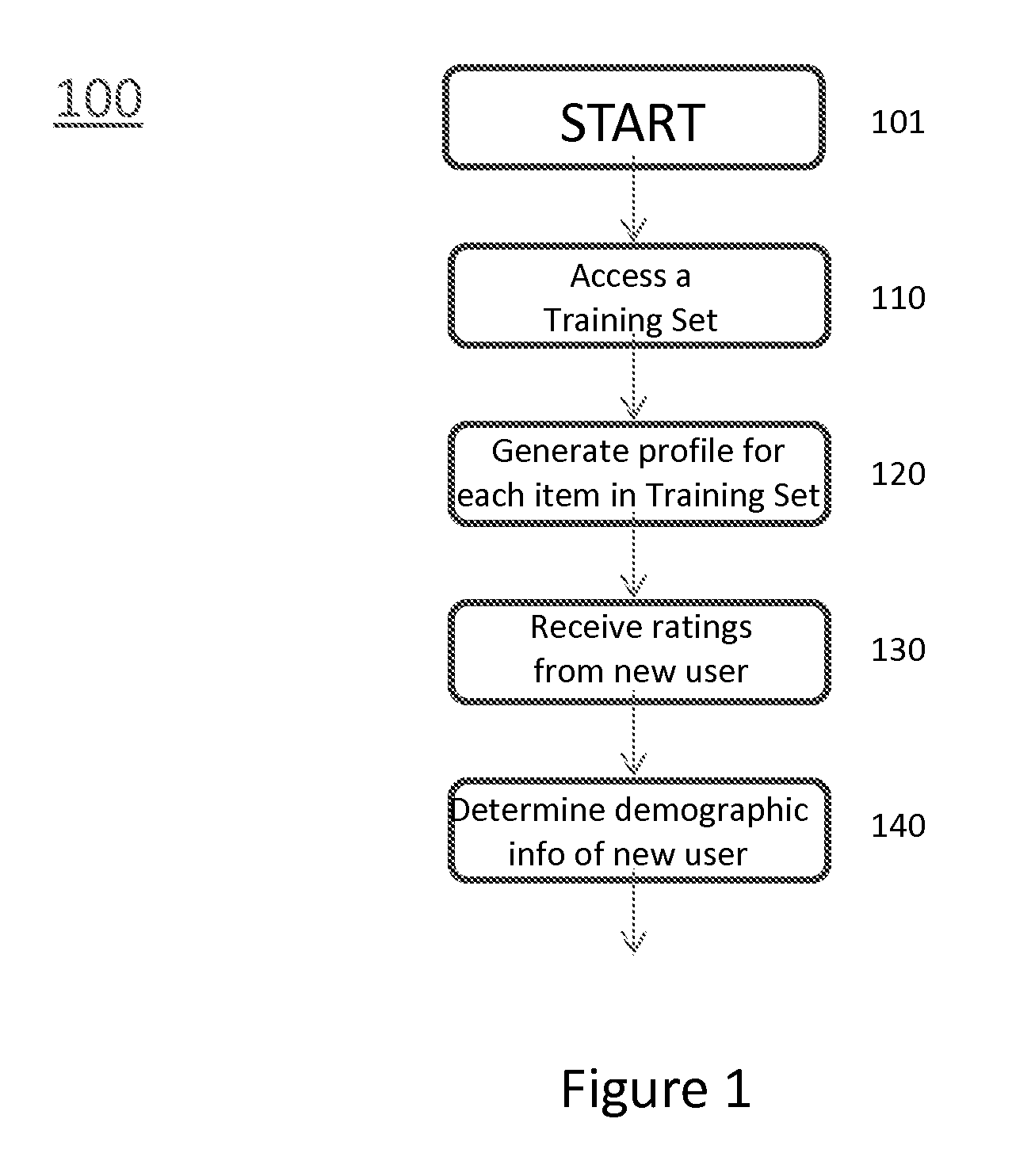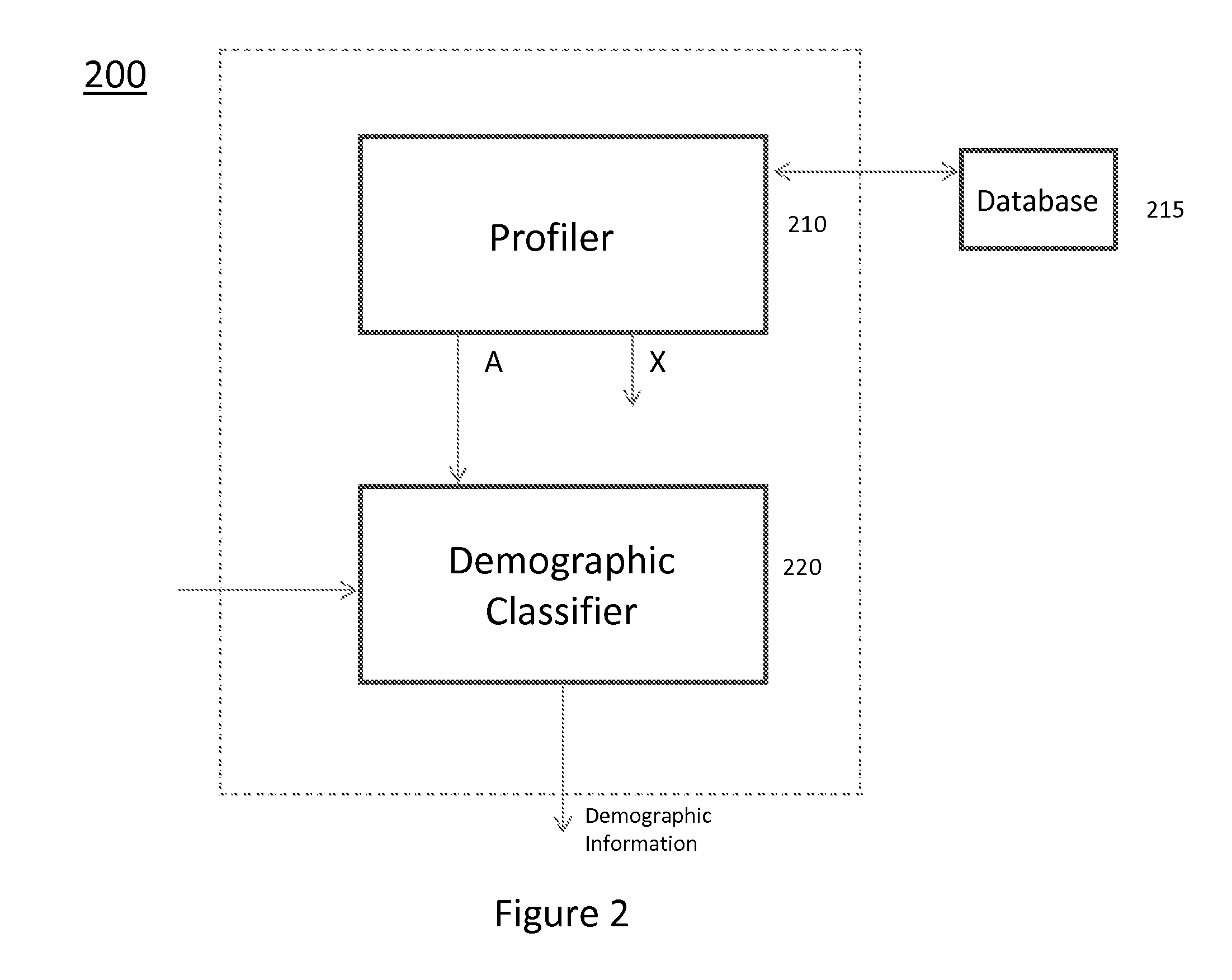Proposing objects to a user to efficiently discover demographics from item ratings
a technology for identifying objects and users, applied in probabilistic networks, instruments, computing models, etc., can solve problems such as inaccurate or vague responses, users are reluctant to voluntarily share demographic information, and are wary of privacy
- Summary
- Abstract
- Description
- Claims
- Application Information
AI Technical Summary
Benefits of technology
Problems solved by technology
Method used
Image
Examples
Embodiment Construction
[0019]The principles described herein are directed to a method and apparatus for generating demographic information based on user ratings. These principles provide a novel approach to leverage matrix factorization (MF) as the basis for building both (a) an inference method of private attributes using item ratings and (b) an active learning method that selects items in a way that maximizes inference confidence in the smallest number of questions.
[0020]First, the described principles propose a novel classification method for determining a user's binary private attribute, her type, based upon ratings alone. In particular, the principles use matrix factorization to learn item profiles and type-dependent biases, and show how to incorporate this information into a classification algorithm. This classification method is consistent with the underlying assumptions employed by matrix factorization.
[0021]Second, the described principles demonstrate that the resulting classification method is w...
PUM
 Login to View More
Login to View More Abstract
Description
Claims
Application Information
 Login to View More
Login to View More - R&D
- Intellectual Property
- Life Sciences
- Materials
- Tech Scout
- Unparalleled Data Quality
- Higher Quality Content
- 60% Fewer Hallucinations
Browse by: Latest US Patents, China's latest patents, Technical Efficacy Thesaurus, Application Domain, Technology Topic, Popular Technical Reports.
© 2025 PatSnap. All rights reserved.Legal|Privacy policy|Modern Slavery Act Transparency Statement|Sitemap|About US| Contact US: help@patsnap.com



